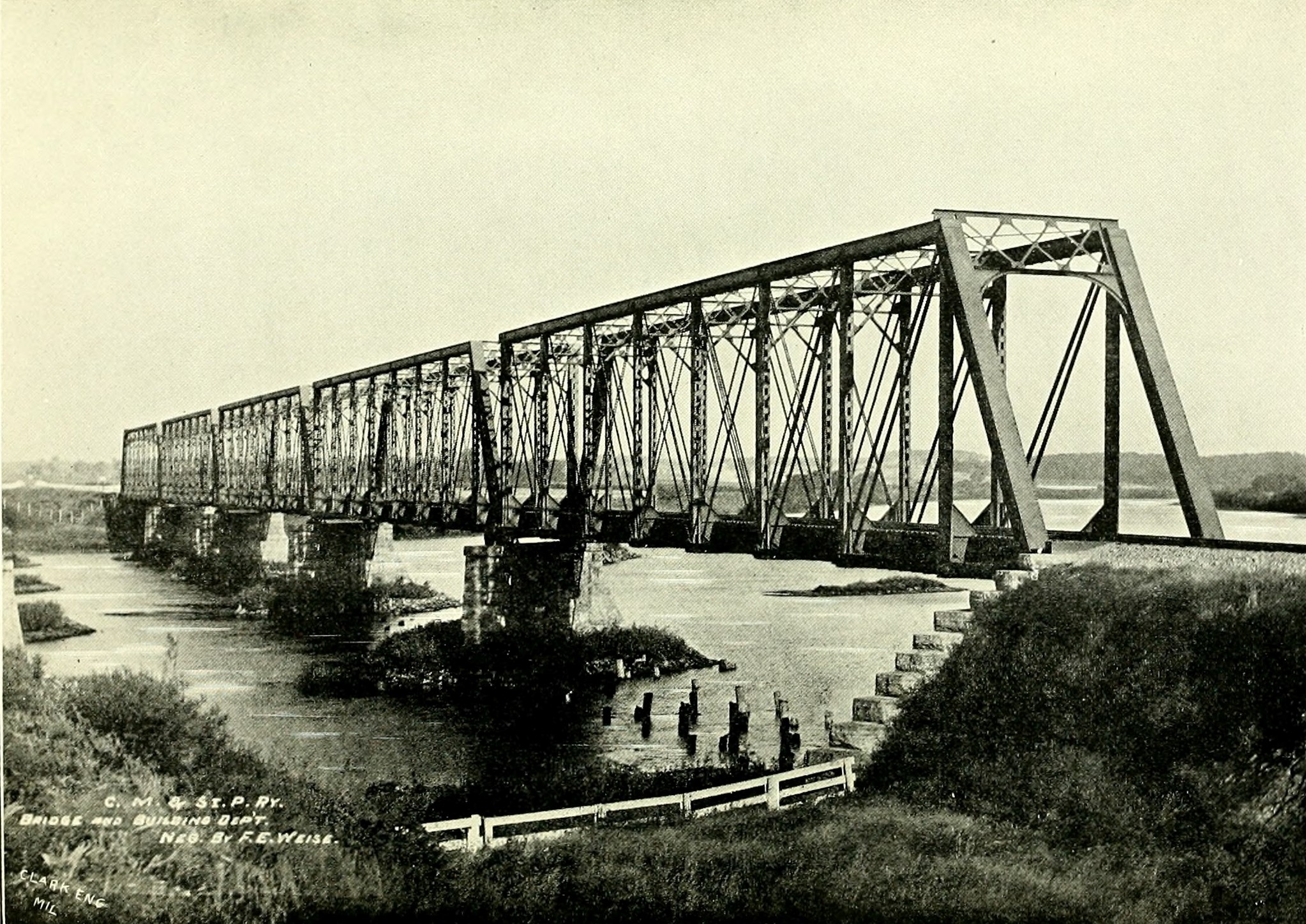The railroad would reach Mason City by 1869, creating a vital link from Central Iowa to the Mississippi River.
In 1869, the McGregor & Missouri River Railway Company continued building the mainline from Mason City, heading west. They reached Algona by the end of the year, and halted construction.
The McGregor & Missouri River Railway was purchased by the Milwaukee & St. Paul Railway in 1870, which was in turn absorbed into the Chicago, Milwaukee & St. Paul Railway in 1874.
The line continued west in 1878, and reached Canton, South Dakota by 1880. The line met at the junction of another north-south line here.
The Chicago, Milwaukee & St. Paul Railway was spun into the Chicago, Milwaukee St. Paul & Pacific Railway in 1913, after the pacific expansion.
The line was vital to the Northern Iowa economy, crossing a wide variety of other lines. In Sheldon and Algona, it crossed Chicago & North Western lines, while at Emmetsburg it crossed a Rock Island Line.
Eventually, the route fell into disrepair west of Sheldon, and the Milwaukee Road hit bankruptcy. During the mass abandonments, 791 Miles in Iowa were abandoned. From Sheldon, west to Canton was part of these.
When the Soo Line purchased the Milwaukee Road in 1985, the line from Marquette to Sheldon was sold to I&M Rail Link in 1997, during a mass selloff of Milwaukee Road lines.
The I&M Rail Link became part of the Iowa, Chicago & Eastern Railway in 2002, which was purchased by the Dakota, Minnesota & Eastern Railway the same year.
In October of 2008, the DM&E was purchased by Canadian Pacific Railway, who is the current owners of this line, but DM&E operates as a dependant subsidiary.
04/03/22
Located in the town of Rock Valley, this large through truss bridge was built to cross the Rock River.
Believed to have been built in Byron, Illinois over the Rock River in 1897, the end spans of that heavily skewed bridge were moved here in approximately 1930 to replace an older trestle. Due to the formerly heavy skewed bridge, the structure here has the appearance of a swing span, as the 16-foot skewed end panels were eliminated. The main spans of the bridge feature a pair of 7-panel, pin connected Pratt Through Trusses. The bridge is approached by trestle, and sits on concrete and wood piers.
Reusing spans was a common technique on American railroads. Heavy main line trusses were commonly moved to branch lines to replace lighter bridges. While not confirmed by structural documents, there are a number of reasons to think this bridge was moved here from Byron.
The end spans of the Byron Bridge were unusual structures, with straight end portals, but 45-degree skews on the inside portals. The upstream face of the end spans of the Byron Bridge had eight panels at 20 feet 6 inches each, as well as an end panel of 16 feet 6 inches. The downstream face had a similar configuration, except it had nine panels. Cutting these spans to a non-skewed 7-panel span would have produced 140 foot spans, which match the lengths of these spans.
An additional bridge in Minnesota was confirmed to have been relocated from Byron, and has identical structural details to this bridge. Numerous locations of empty rivet holes further indicate modifications to the bridge, such as the elimination of the skew panels.
Further research will be conducted to find documentation linking these bridges. However, the author has a high level of confidence that this mystery is solved.
Overall, this bridge remains in excellent condition. It was saved from demolition by the Kiwanis of Rock Valley after abandonment. This structure should be more than strong enough to hold pedestrian traffic for years to come, although the approaches appear to need repairs.

Byron, Illinois bridge; This bridge was one of the five spans shown. Note the vertical endpost of the three middle spans.
The author has ranked this bridge as being regionally significant, due to the highly unusual design and relocation history.
The photo above is an overview. The photo below shows the middle joint of the bridge.
